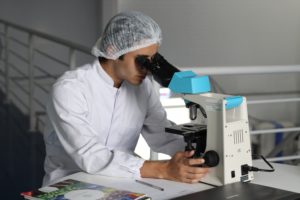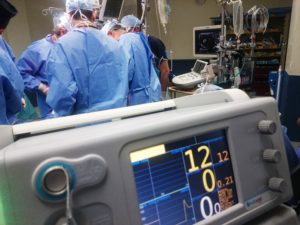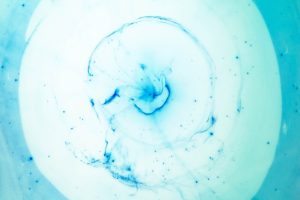Regenerative medicine is making its way to the forefront of non-invasive alternative medicine. This broad field represents a number of treatment options. Those suffering from both acute and chronic pain now have another option!
There are several regenerative medicine techniques that hold particular promise in the field of orthopedics, which focuses on musculoskeletal conditions.
Orthobiologics
 When we injure ourselves, the injured area starts to bleed. This response jumpstarts the healing process as blood flow provides the healing nutrients to get into the affected area.
When we injure ourselves, the injured area starts to bleed. This response jumpstarts the healing process as blood flow provides the healing nutrients to get into the affected area.
There are three factors which can affect the body’s ability to heal:
- Matrix – This conductive material is responsible for filling in gaps in the bone. It is where cells create bones, tendons, and ligaments.
- Growth factors – There are different types of growth factors. There are those that aid in the healing process (like PRP) while others help control or stifle the process entirely. This balance is essential to our body’s overall health and ability to efficiently function.
- Stem Cells – These kinds of cells are present in several areas of the body. They possess the ability to turn into other types of cells. When the body suffers an injury, stem cells rush to the injury site to start repairs. They excel in healing bone, tendon, and ligament injuries.
When the body has inefficient blood flow to an injury, it is unable to heal efficiently. When this happens, the patient might start experiencing prolonged pain, weakness of the injured area, and/or swelling. Amping up the presence of orthobiologics in the body is one way to amplify the healing process.
Stem Cell Allografts
 These days, stem cell research is trying to shy away from controversy. It largely focuses now on using non-embryonic stem cells (NESCs) for studies and treatments.
These days, stem cell research is trying to shy away from controversy. It largely focuses now on using non-embryonic stem cells (NESCs) for studies and treatments.
NESCs are present in placental tissue, umbilical cord, bone marrow, or fat cells. They present no harm to fetal cells. Skeletal muscle-derived stem cells (MDSCs) can also be used for these treatments.
All of the above are NESCs. These types of stem cells have the ability to regenerate tissue. They are cells that focus on seeking out areas of injury and disease. When no injury or disease is present, these stem cells stay dormant within the body.
An allograft is a tissue graft. Stem cell allografts is the same idea except it is injecting undifferentiated cells (cells with no initial “job”) in the hopes of regenerating damaged tissue. They are especially useful in orthopedics because these cells can manifest into several different types of tissues. These manifestations can range anywhere from bone, fat, cartilage, blood vessels, connective tissues, muscle, and nerve tissues. Stem cell allografts also help boost the body’s natural healing process. All the doctor needs a relatively small tissue sample from the patient.
Scaffolds
 A scaffold is a collagen-based regenerative medicine technique. It provides a protective environment for cells and growth factors. This protection provides safe housing where new tissue and organ generation takes place.
A scaffold is a collagen-based regenerative medicine technique. It provides a protective environment for cells and growth factors. This protection provides safe housing where new tissue and organ generation takes place.
Scaffolds are often made out of a collagen gel- it acts as a suitable carrier. The gel has been used in the medical field since 1986 to treat skin disorders and as a cosmetic surgery aid.
Scaffolds are often accompanied by a “bioreactor”, some sort of device (or system) that applies and differentiates mechanical and chemical stimuli to your body’s cells, sending them to the appropriate areas. “Cell-seeded” scaffolds are those that have been imbued with cells that have been grown in vitro to help with tissue synthesis.
Gene Transfer/Therapy
 This type of therapy can be used in conjunction with scaffolds to appropriately modify cells. This readies them for injection. Gene therapy is often a more cost effective option than directly injecting constructed growth factors.
This type of therapy can be used in conjunction with scaffolds to appropriately modify cells. This readies them for injection. Gene therapy is often a more cost effective option than directly injecting constructed growth factors.
Gene therapy is a new opportunity to treat difficult orthopedic problems, such as defective bone healing, ineffective bone formation, and issues involving cartilage repair. This technique is not effective, however, at treating bone cancers or severe genetic bone disorders.
Gene transfer utilizes viral vectors. These vectors are derived from live viruses. These viruses include adenoviruses, adeno-associated viruses (AAV), oncoretroviruses, lentiviruses, and herpes simplex viruses. Injecting these viral vectors into the body at a specific site has the ability to transplant genetic material.
Non-viral vectors are more cost-effective. They are easier to produce, but are less efficient than viral vectors. Both viral and non-viral vectors can either be inserted directly into the body (this is called in vivo) or indirectly via genetically modified cells (created in vitro).
There are 4 categories of orthopedics where gene transfer/therapy is useful:
- Mendelian disorders (Ex: sickle-cell anemia, Tay-Sachs disease, and cystic fibrosis.)
- Tumors
- Arthritis and other joint diseases
- Tissue Repair and Regeneration
It is an incredibly difficult procedure to perform, however. This difficulty is due to constraints concerning favorable translation into the body. Due to this and other reasons, substantial clinical evidence supporting gene therapy’s efficacy is yet to be revealed. That being said, what studies are available reveal positive conclusions; it is enough that more and more doctors are starting to offer this non-surgical option to their patients.
Inductive Factors
Muscle-derived stem cells (MDSCs) require certain factors to be present, or the cells won’t fulfill their function.
- Bone Morphogenetic Proteins (BMPs)- These proteins need to be present in order for the MDSCs to effectively perform osteogenic (bone production) and chondrogenic (cartilage forming) processes.
- Vascular Endothelial Growth Factors (VEGFs)- These growth factors, in combination with BMPs, are responsible for promoting more efficient bone growth and formation than when injected individually.
- Noggin- This is a necessary antagonizer of BMPs. While regeneration of bones, muscles, and tendons are the desired outcome, it is important to regulate and chaperone their growth. Noggin’s ability to inhibit heterotopic (tissues occurring in an abnormal place) helps promote healthy and normal tissue regrowth.
Without the above factors functioning properly, stem cell treatments will be largely unsuccessful.
Learn More About Regenerative Medicine
Check out this post that covers more types of regenerative medicine. Or, give us a call or schedule a consultation today to see how regenerative medicine can change your life!

